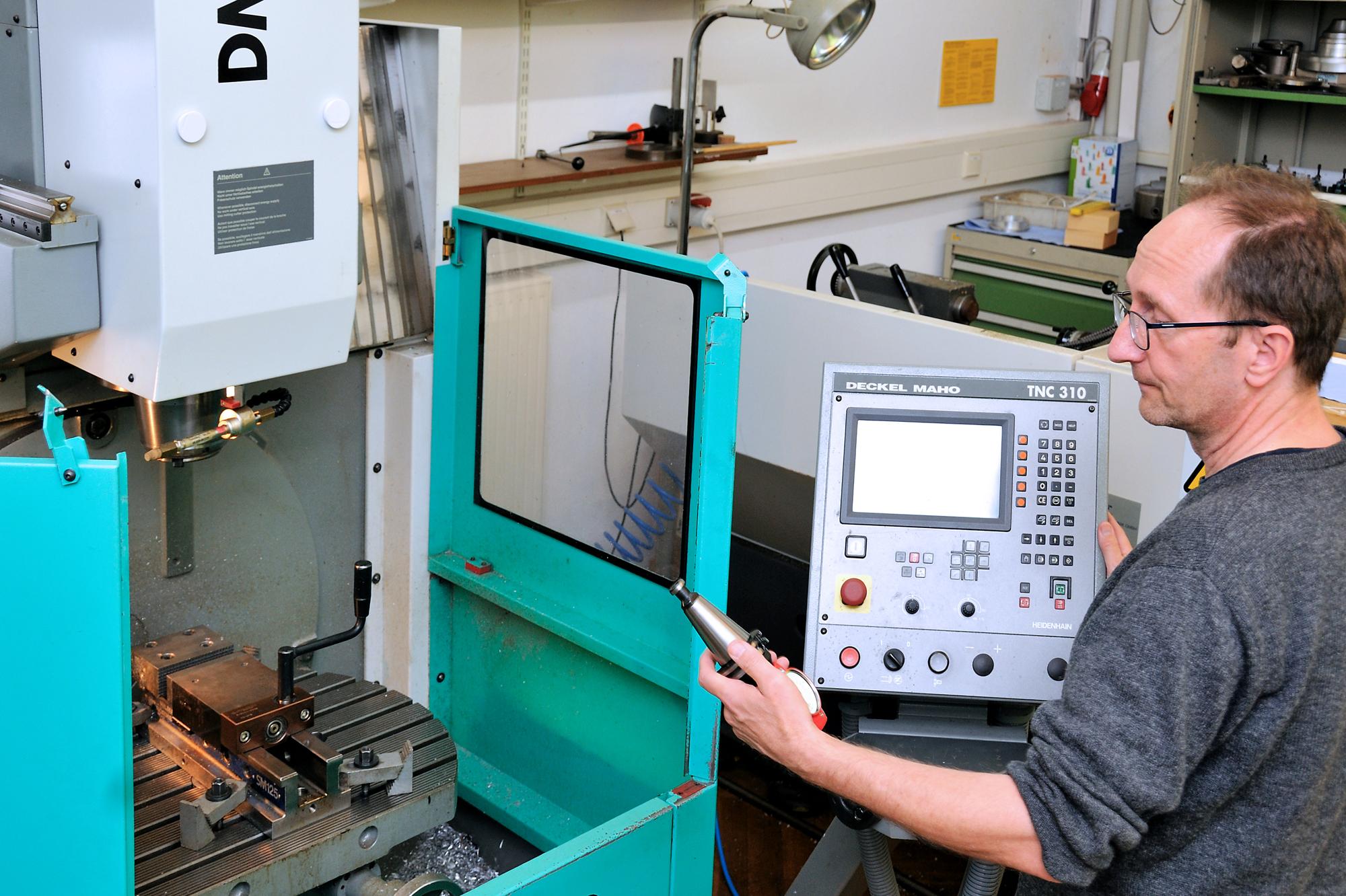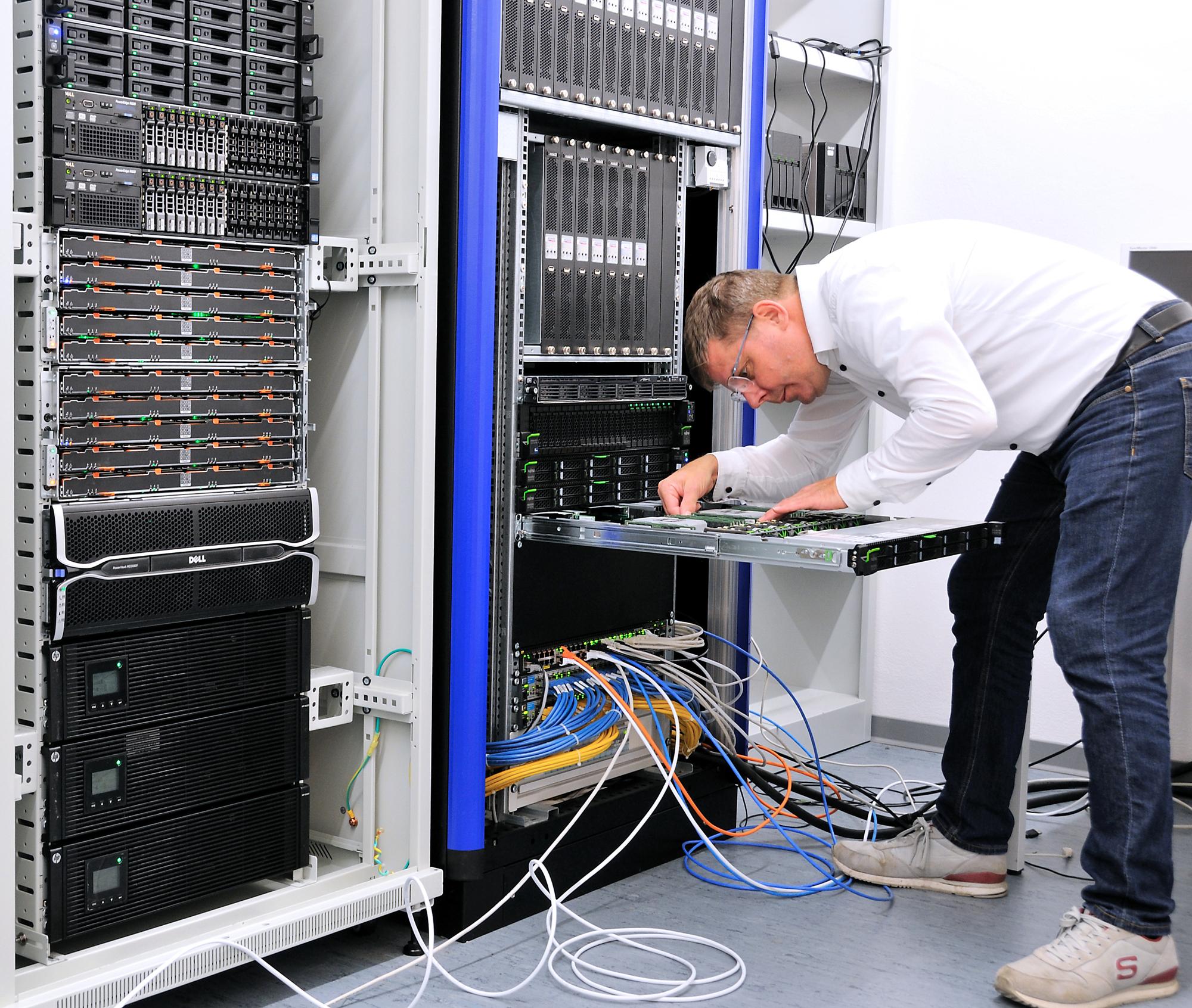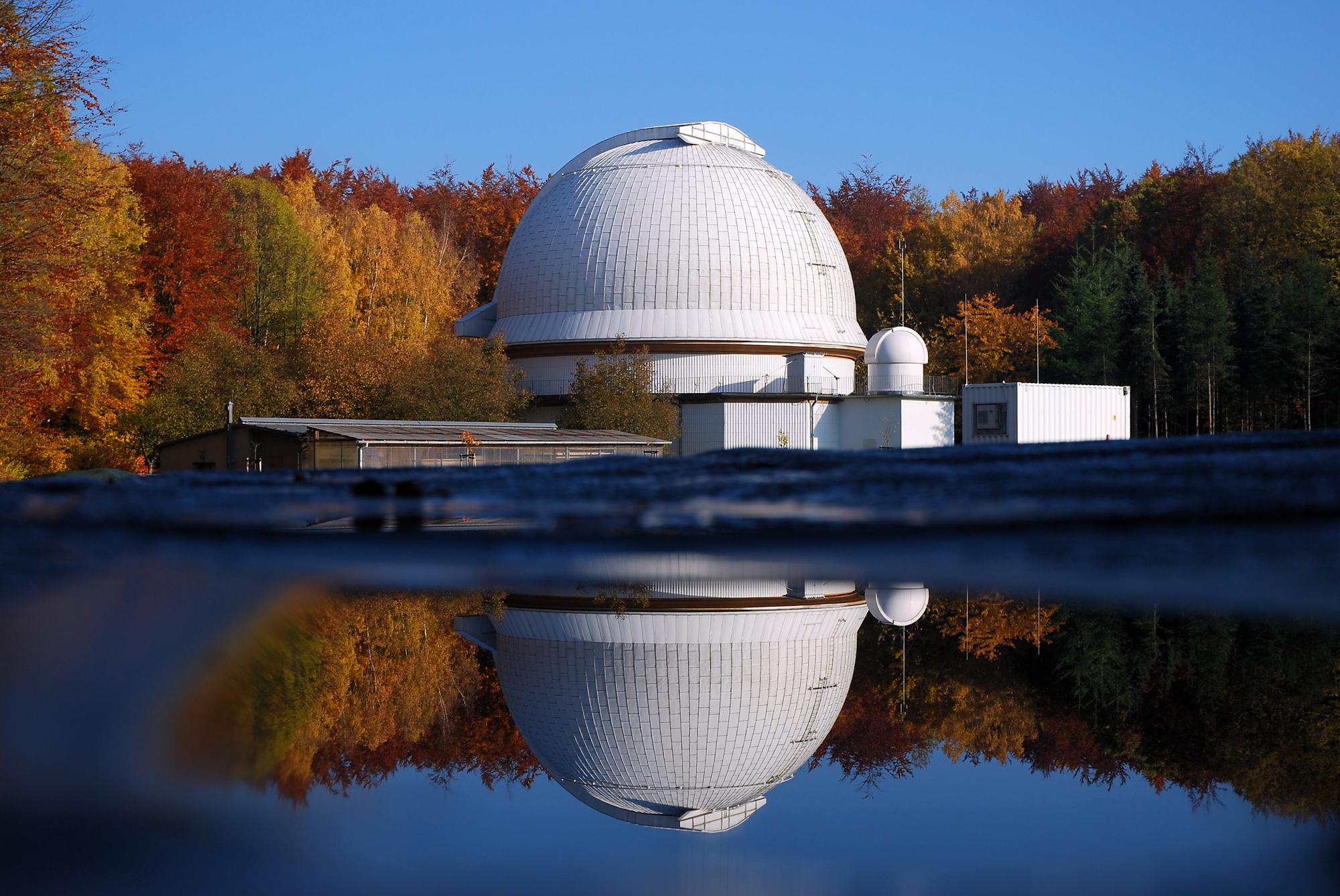
2-m Universal Mirror Telescope
The centerpiece of the Tautenburg Observatory for optical spectral observation is the 2-m Universal Mirror Telescope. When it was commissioned, it was among the five largest telescopes in the world. In 1992, it was named the Alfred Jensch Telescope in honor of its chief designer.
It combines the functions of various types of telescopes. Through suitable modifications, it can be converted into a Schmidt system, a Nasmyth system, or a Coude system, thus optimizing it for various observation tasks.
The Schmidt Telescope was named after the astro-optician Bernhard Schmidt, who invented this type of telescope and first manufactured it in 1930.
The Schmidt Telescope was named after the astro-optician Bernhard Schmidt, who invented this type of telescope and first manufactured it in 1930.
It is characterized by an extremely wide field of view, making it particularly suitable for capturing large areas of the sky. The Schmidt Telescope requires a spherical primary mirror and a special correction lens at the front end, positioned at twice the focal length. The light-gathering power of the Schmidt Telescope is determined by the diameter of the correction lens. The Tautenburg correction or Schmidt lens is still the world's largest with a diameter of 134 cm. The primary focus with a 4 m focal length is located inside the telescope. Large-area light detectors (formerly photographic plates, now electronic CCD detectors) are used there.
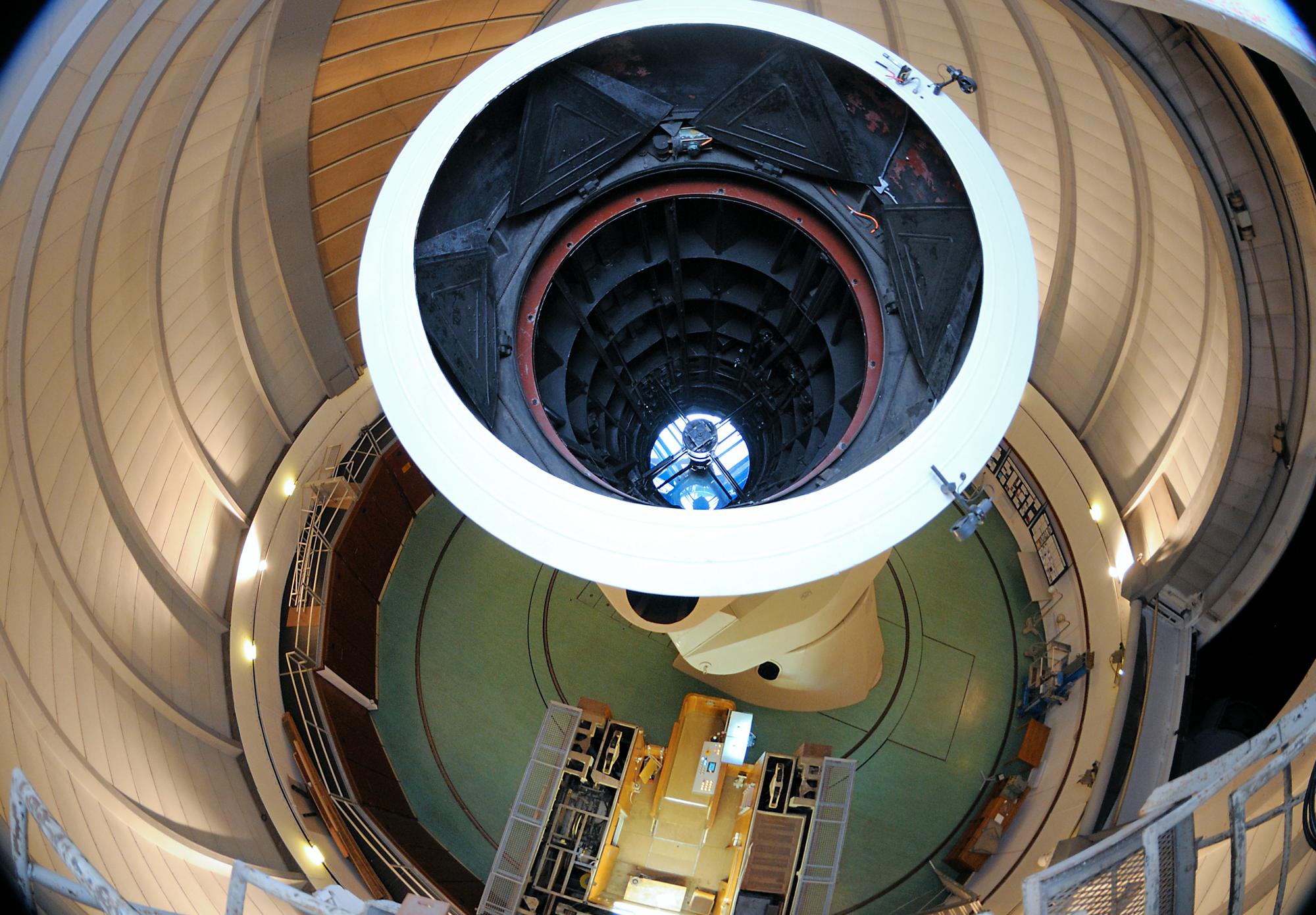
The Nasmyth and Coude foci used for the examination of individual objects have a smaller field of view. The brightness is determined by the diameter of the main mirror. The light collected by the Schmidt Telescope is directed to an easily accessible location outside the telescope using a secondary mirror and additional deflecting mirrors. Supplementary instruments such as photometers or spectrographs can be installed there.
The Nasmyth focus (21 m focal length) is located on the upper fork arm, i.e., on the moving telescope, while the Coude focus (92 m focal length) is fixed and located separately in a special room. In this room is the high-resolution Coude spectrograph, which requires its own foundation and a climate-controlled environment due to its size and sensitivity.
Astronomical observation places the highest demands on all components of the telescope. For example, the mirror had to be ground and polished with extreme precision, down to 0.00003 mm, during manufacturing. The glass-ceramic material of the mirror body prevents shape changes due to temperature fluctuations, while a special support system compensates for shape changes in the mirror due to changes in the telescope's orientation. Object adjustment, tracking, and the operation of all additional equipment are computer-controlled.
Telescope's Additional Equipment
The performance and versatility of a telescope for various astronomical inquiries depend on the extent and quality of its additional instruments. In line with the capabilities of the Tautenburg Universal Telescope, its additional instruments are particularly versatile. The most important devices and their applications are described below.
Photographic Equipment in the Schmidt Focus
From 1960 to 1995, approximately 10,000 photographic images were taken with the Tautenburg Telescope in the Schmidt focus. Using 24 cm x 24 cm photographic plates, a field of 3.3 x 3.3 degrees in the sky could be imaged. These plates were always combined with color filters, allowing not only the positions of stars and galaxies to be measured but also their brightness in different colors. To enable the analysis of these images with computers, the plates are digitized using an institute-owned plate scanner.CCD Receiver in the Schmidt Focus
CCD cameras offer several advantages over photographic plates. They are not only hundreds of times more sensitive, but brightness measurements can also be made with greater accuracy, and the image is immediately available in digital form. The cameras used in Tautenburg differ fundamentally from commercial digital cameras. Since long exposure times are common in astronomy, the CCD receivers are cooled to around -100°C. The chips are read out using special electronics. CCD cameras with up to 4096 x 4096 pixels are available for the Schmidt focus. The field of view is almost one square degree in the sky. For comparison, the full moon has an area of only 0.2 square degrees.Nasmyth Spectrograph
When the light of stars is broken down into its colors, certain wavelengths reveal absorption, while others show emission; these are known as spectral lines. By analyzing these lines, astronomers can measure the speed at which the star is approaching or moving away from us. The spectrum can also provide information about the chemical composition and surface temperature of the stars. The Tautenburg Telescope is equipped with two spectrographs. The Nasmyth spectrograph is used for faint stars and galaxies. It is mounted on one of the two fork arms in the Nasmyth focus. The light breakdown is done using so-called Grisms, a combination of prism and diffraction grating. The Nasmyth spectrograph has five different Grisms, which are used depending on the scientific objectives.Echelle Spectrograph
The Echelle spectrograph is located in the basement of the dome building. Its resolution is 30 to 100 times higher than that of the Nasmyth spectrograph. It is used for the detailed examination of relatively bright stars. The light is broken down using a diffraction grating called an Echelle grating. With the help of a special calibration device, the iodine cell, a displacement of the spectral lines on the detector can be measured with an accuracy of 0.00005 mm.
The Thuringian State Observatory also builds instruments for other telescopes. This allows its staff exclusive access to these telescopes. The institute participated in the construction of the GROND instrument, a camera for a 2.2-meter telescope on Mount La Silla (Chile), which can capture images in seven different color bands simultaneously. Another instrument is HERMES, an Echelle spectrograph for the 1.3-meter Mercator Telescope on La Palma (Spain), and CARMENES, an Echelle spectrograph that is intended for use on the 3.5-meter telescope at the Calar Alto Observatory (Spain).
TES Telescope
Extrasolar planets, whose orbital plane we view exactly from the side, can cause eclipses of their parent stars as they pass in front of their stellar disks. During such an eclipse, also known as a transit, a small part of the bright stellar disk is obscured by the planet, resulting in a slightly lower apparent brightness of the star during that time. By measuring the brightness of many stars repeatedly, such rare transit events and the planets causing them can be discovered. The TES Telescope (Tautenburg Exoplanet Search Telescope) was specifically built for the purpose of finding such transit planets.
They are of the utmost scientific interest: when combined with spectroscopic radial velocity measurements, not only the diameter but also the mass of the planet can be determined, and hence its density. This provides information about the composition and structure of extrasolar planets. The TES has an aperture of 30 cm and, with its CCD camera, can capture an area 16 times the size of the full moon in a single shot. For several years, the TES has been conducting its own program to search for transit planets. It also participates in verifying transit planet candidates discovered within the framework of the French-European satellite mission COROT.
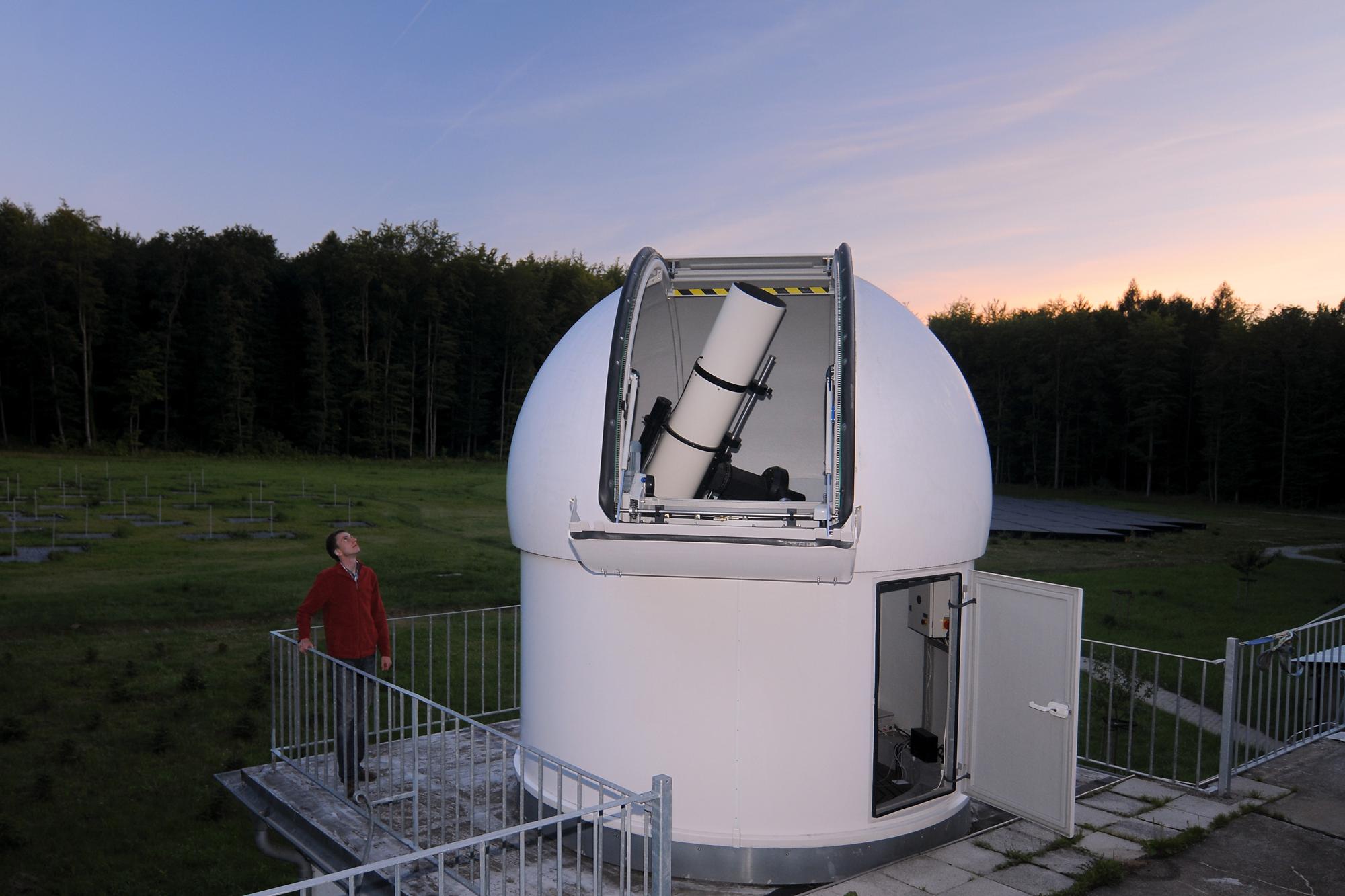
The Low-Frequency Array (LOFAR)
TLS is involved in the international mega-project LOFAR, which allows the study of celestial objects in the frequency range from 10 to 240 MHz. For comparison, FM radio stations broadcast at around 100 MHz. LOFAR consists of many individual antennas grouped in soccer field-sized fields (like the one at TLS). Together, all fields form a telescope that enables the study of the sky in this frequency range with previously unattainable sensitivity and resolution.
LOFAR consistently utilizes state-of-the-art digital technology.
LOFAR consistently utilizes state-of-the-art digital technology.
All antenna fields transmit the received signals via high-speed data lines to a supercomputer in Groningen, Netherlands. This supercomputer processes the data from all stations collectively and generates celestial maps, among other things. Traditional telescopes are aimed at stars or galaxies and capture the brightness distribution in the sky on a CCD. LOFAR, on the other hand, has no mechanical or optical components at all. The telescope's orientation to a celestial object and the creation of the celestial map are accomplished through digital data processing, "with a click of the mouse." This makes LOFAR an extremely flexible telescope.
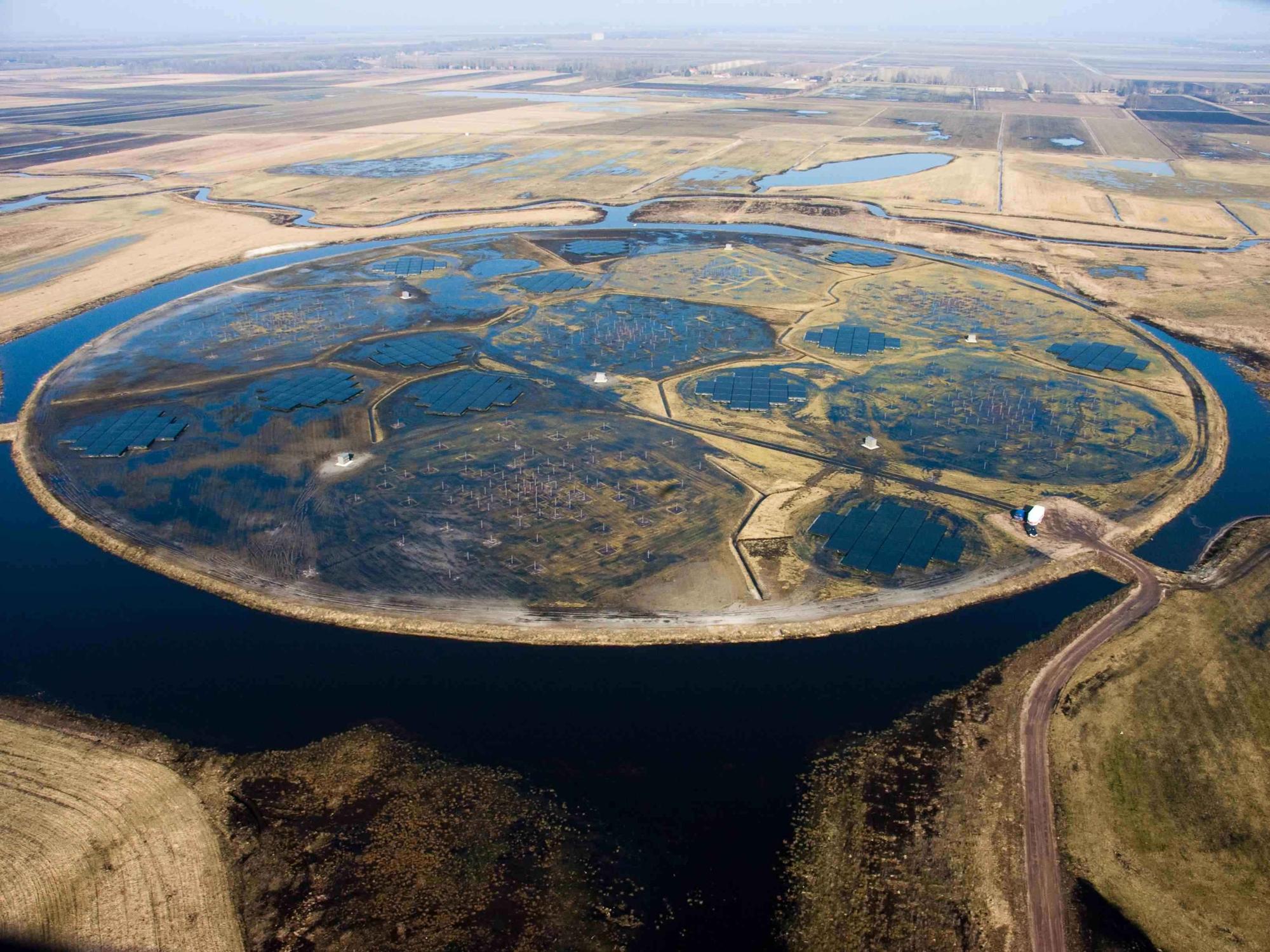
The sky appears very different in the LOFAR frequency range compared to the familiar image in the visible light spectrum. For example, objects like Cygnus A (a radio galaxy) and Cassiopeia A (a supernova remnant) are much brighter for LOFAR than the sun. These two objects emit synchrotron radiation from fast-moving electrons in magnetic fields. However, the hot outer layer of the sun, which appears very bright to us, is just one source among many for LOFAR. LOFAR allows the study of objects and phenomena in the sky that remain hidden in visible light, especially magnetic fields in the universe.
An important goal for LOFAR is to explore how the explosion of the first stars in the early universe heated the gas between galaxies (the epoch of reionization). According to model calculations, the radiation released 13 billion years ago should be detectable by LOFAR at a frequency of about 180 MHz. If successful, this will provide insights into the beginning of star formation in the universe.
The Workshops at TLS
The four workshop areas at TLS are responsible for the maintenance and upkeep of existing telescopes, as well as technical support for the development and enhancement of astronomical observation technology.
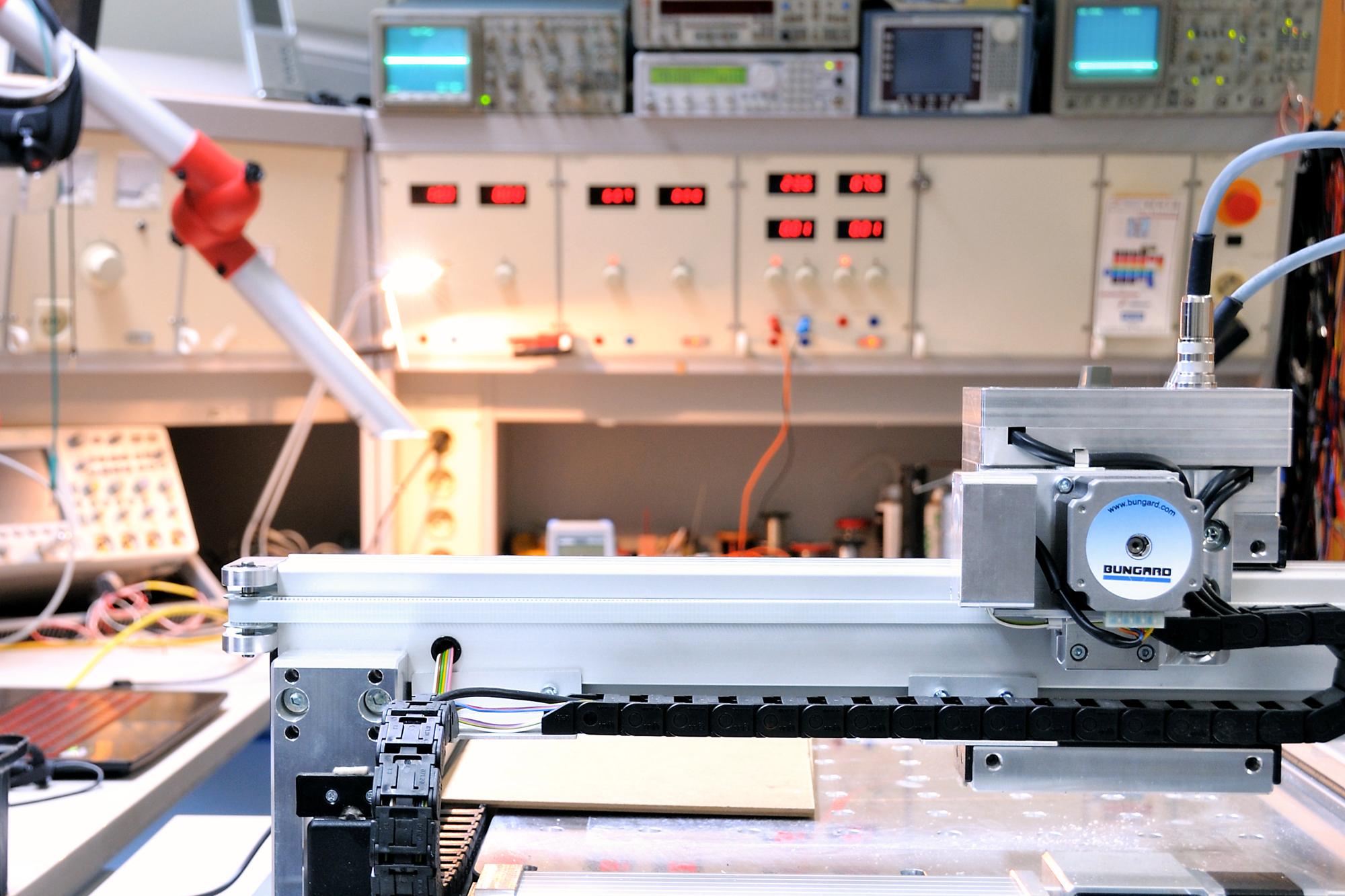
Precision Mechanics Workshop
The precision mechanics workshop handles the project planning of devices and assemblies, modeling with 3D software (Inventor), and mechanical manufacturing using CNC machines, conventional techniques, and a 3D printer.Electronics Workshop
The electronics workshop designs and builds controls, power supply modules, and electronic measurement systems. Planning is done using E-CAD systems like E-Plan and Target, and prototype manufacturing of printed circuit boards and small parts is done using milling plotters. For soldering work, conventional soldering techniques are available, as well as soldering microscopes, SMD technology, hot air, and a reflow oven.IT Department
The IT department specializes in the development of applications for astronomical observations, programming device-specific software for the operation of devices, and their integration into observation technology.Building Services
The building services department handles larger mechanical structures, construction-related tasks, and welding work (arc welding, gas shielded welding). Conventional machines for manufacturing large-sized mechanical components are also available.